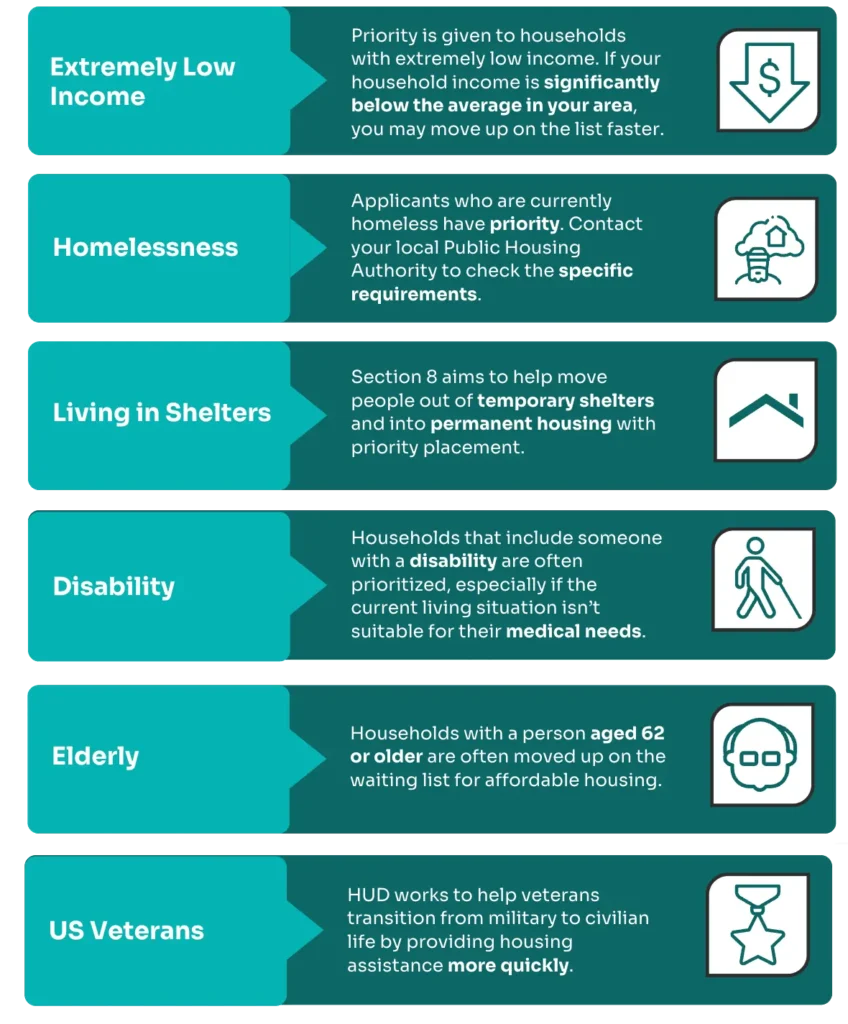Waiting for your Section 8 application to process can be stressful. It usually takes anywhere from weeks to months or even years for applications to be processed, but you can check on your Section 8 status by contacting your local Housing Offices or PHA.
Section 8 helps low-income families, seniors, and people with disabilities find affordable housing. Unfortunately, demand is high, so many people end up on a waiting list that can take years to move through.
Once you apply, you’ll be placed on this list. Be sure to keep your contact info updated—if the PHA can’t reach you, your application may be removed, and you’ll have to start over.

How To Check Your Application Status After Applying For Section 8
It’s important to regularly check your Section 8 application status so you can act quickly if your Public Housing Authority (PHA) contacts you. Some PHAs will send “Update Contact Info” letters if you’ve been on the waiting list for a while (usually after a year). Make sure to respond to these letters and follow their instructions to avoid losing your spot.
- Frequently contact the Public Housing Agency where you placed your application. It’s important to contact the same office where you applied. Use this link to quickly search your area for your nearest PHA office if you do not have their contact info or if you’re just beginning your application now.
- After you have your PHA contact info you can either call or visit the PHA website to contact the PHA about your application’s status. You can also mail or visit the office in person.
- You can try calling your PHA office to confirm your application status. Click on this link to find the specific phone number for the office in your location.
- Alternatively, you can check your application status online via a waitlist check service. Waitlistcheck.com can give you an update on your application if you’re already on the waitlist. Simply log in using your birth year, then type in the password given at your PHA.
Note that different housing authorities vary in their methods of providing a status update. Some may not provide your specific position on the waiting list but can tell you if you are or are not on the list.
Why Is My Section 8 Taking So Long?


Waiting List Confirmation Letter: What You Need to Know
After submitting your application for the Section 8 waitlist, there are a few things to expect. Although it varies based on the Housing Authority, these are what the steps typically look like:
What Should I Do After I Apply to A Waitlist?
Once you’ve applied and are placed on the Section 8 waitlist, there are a few important steps to follow to make sure everything goes smoothly:
- Keep Records Handy
- Write down key details like:
- Your login info if you applied online
- The Housing Office where you applied
- The date you applied
- Your position on the waitlist (if available)
- Any confirmation numbers you received
- Write down key details like:
- Estimate Your Wait Time
- To get an idea of how long you’ll wait, contact the Housing Office. If they can’t give an exact answer, ask for their Annual Plan. This document shows how many people are on the list and the turnover rate. Keep in mind, that it’s often just an estimate.
- Check Your Status Regularly
- Stay on top of your application by checking your status often—whether by phone, visiting the office, or using an online service like Waitlistcheck.com.
- Tip: Keep your contact info updated, including any changes in your address or income.
- Respond to Notices Quickly
- If you get any letters or emails from the Housing Office, respond as soon as possible. Not responding could result in losing your spot on the list.
- Prepare for Your Eligibility Review
- You’ll need to attend a Final Eligibility Review in person when your turn comes up. Sometimes, they may ask your whole household to attend. Missing this appointment could cause you to be removed from the list.
- Search for a New Home
- After receiving your Section 8 Housing Voucher, you can look for your new place!
- Find Support
- Consider joining online or local groups of people also on the waitlist. These communities can provide updates, share tips, and offer support during the long waiting process.
Remember, being on the waitlist takes time and patience. It may feel long, but staying proactive and positive will help you navigate the process smoothly!
How to Get Priority on the Waitlist
For applicants to be approved for the Section 8 housing voucher, they are placed on a waiting list, which can take up to several years before a response is given. You may be qualified to be placed on the priority wait-list if you are in one or more of the situations below.

FAQs About Section 8 Application Status
If you still have questions about your Section 8 application status, we’ve answered the following for you to give you better clarity.
What Should I Do to Make Sure the PHA Can Reach Me?
Many people lose their spot on the Section 8 waiting list or even their housing voucher because the Public Housing Authority (PHA) can’t reach them. This usually happens when contact information changes, and applicants forget to update the PHA. Here’s what you can do to avoid this:

Where Is My Local PHA Office Located?
Each State has many PHA offices you can visit or contact, but it might be easier to contact the ones closest to you or the area you would like to live in. If you would like a list of the PHA offices in your state, you can make a simple search here.
What If I Lose My Job While on Section 8?
As with everything else in Section 8, the best thing to do to keep receiving your benefits is to keep them informed about everything.
Yes, you need some income to be able to pay for your portion of the rent, but if you lose or quit your job, the first thing you must do is let them know that your income situation has changed. It is possible, depending on the circumstances, that they may adjust your rent payments.
If you are receiving a regular unemployment check, keep in mind this is considered income and must also be reported to the PHA. The PHA excludes temporary or non-recurring benefits, but you should still inform them of these as well.
Will Section 8 Also Pay for My Utilities?
Section 8 does help those with extremely low or zero income with utility expenses. The PHA will calculate if you may qualify for utility reimbursement and either send you a check or pay the utility companies directly. The PHA calls this money your “Utility Allowance” and it covers a reasonable amount of your utility expenses.
It is important to note that the PHA will not cover excessive or wasteful utility bills. If you exceed your Utility Allowance you must cover the difference out of your own pocket. If you live in a building and your landlord pays the utility bills for the entire building, you do not qualify for a Utility Allowance.
What Utilities will Section 8 Help Me Pay For?
How Much Is My Utilities Allowance on Section 8 and Am I Receiving Any?
If you would like to know if you are receiving a Utility Allowance or how much of a Utility Allowance you currently receive, you can do so by either checking if it’s stated on your lease, checking your income recertification paperwork filed each year, or you can request your Utility Allowance amount from your landlord or PHA.
Can My Section 8 Utility Allowance Be Adjusted If I’m Disabled?
If you or someone in your household has special needs due to a disability, you may qualify for a higher Utility Allowance.
For example, if you use any medical equipment that requires the use of electricity, such as an oxygen concentrator or asthma nebulizer, you could receive more allowance to cover the extra electrical expenses these will consume.
Helpful Links for Section 8 Assistance
If you need some links to help you navigate through the HUD Section 8 database, see these below:
- PHA Contact Information: #1| #2 | #3
- HUD offices per state: #1 NY | CA | TX | FL | More | #2
- Section 8 Homeownership Assistance: #1
Final thoughts
Checking the status of your Section 8 application is quite important for you to stay positive and also know your position. Ensure you keep all records of your PHA office and continue to communicate as often as possible with the agency. With this, they become aware of your application and do not accidentally have you removed from the waiting list.

